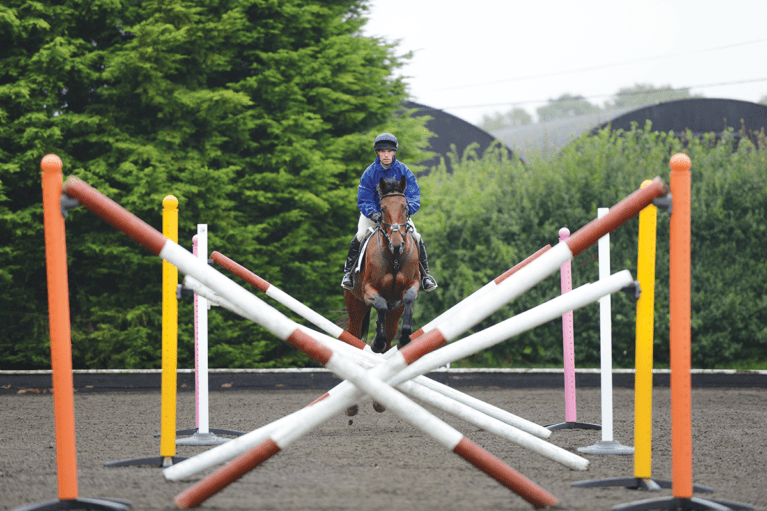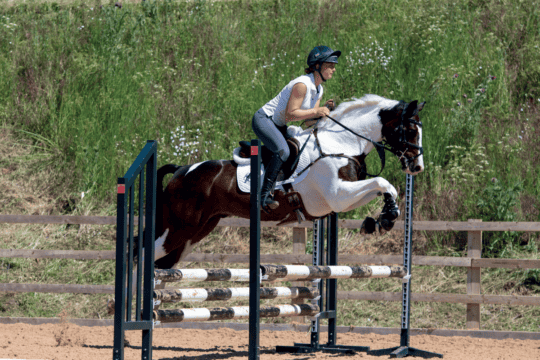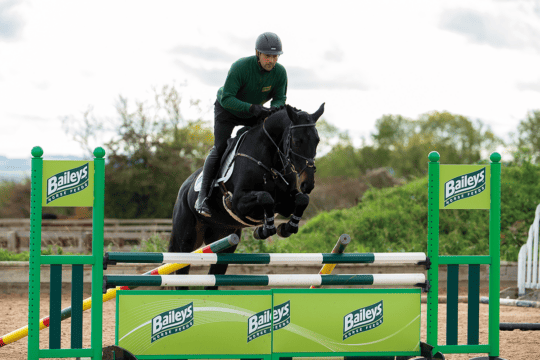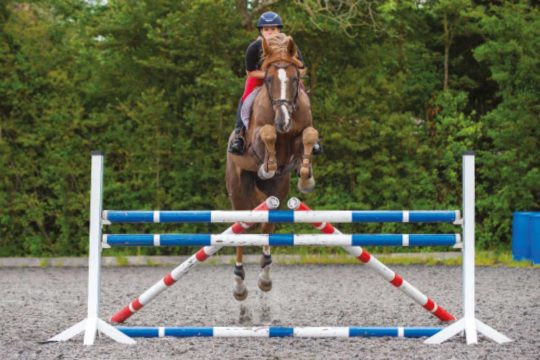-
Riding Schooling and Training
-
Health and Veterinary
-
Management
-
Mind Matters
-
Buying and Selling
-
Insurance Advice
FAQs
Harry Meade fixes 11 common problems with one exercise
Posted in Riding Schooling and Training Jumping
Cross-country riding is the ultimate test of not only a horse’s athletic skill, but also his intellect and his ability to problem-solve.

Cross-country riding is the ultimate test of not only a horse’s athletic skill, but also his intellect and his ability to problem-solve. With the increasing technicality of cross-country courses, it’s essential to hone these skills in order to be safe and competitive. For a whole host of reasons, however, it’s sometimes impractical or impossible to school regularly over solid fences. This is a particular concern in the winter, when the ground is either too hard or too boggy, but the new competition season is just around the corner. Fortunately, you can set your horse – and yourself – up for success by working on essential cross-country skills in the school.
Polish your position
I’m a stickler for stirrup length. Most people, in my opinion, ride too long in the jumping phases and should be shortening their stirrups considerably, particularly for cross-country riding. My cross-country length is four holes shorter than my showjumping length – they should be verging on uncomfortably short, because this will help you to stay stable and out of the saddle when riding across country at speed.
When you’re practicing your cross-country skills in the arena, you should ride in a modified cross-country position, with your stirrups midway between showjumping and cross-country length.
The correct canter
The correct canter is the essential foundation for any sort of jumping exercise, but especially for cross-country or cross-country simulation exercises. Begin by allowing your horse to stretch in trot. Ride a transition to canter and get off his back to allow him to flow forwards. Bridge your reins and stay off the track of the school so that you have to support him with your inside leg to stop him from drifting in and cutting across his turns, and your outside leg to stop him from drifting out.
The gridwork exercise
The grid starts in a very basic way, but develops into an athletic jumping exercise that requires your horse to be quick-thinking and nimble. It fine tunes his co-ordination and reaction times, and it’s a good exercise for keeping him switched on and thinking, as he has to focus on what’s happening in front of him. It’s particularly helpful for horses who are easily distracted.
To find out how to set up and ride Harry’s problem solving gridwork exercise, and more about setting your horse up for cross-country success read the full feature in Spring Horse&Rider – click here to buy your copy. Watch the exercise in action below…















